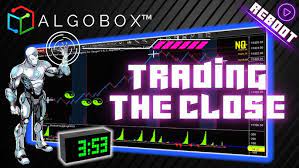In the ever-evolving landscape of financial markets, traders are constantly seeking innovative tools and technologies to enhance their strategies and maximize profits. One such tool that has gained significant traction in recent years is the forex robot. These automated trading systems promise to revolutionize the way individuals engage in foreign exchange (Forex) trading by executing trades on behalf of the user based on pre-defined parameters and algorithms. However, as with any technological advancement, understanding the intricacies and implications of Forex robots is crucial for traders looking to integrate them into their trading arsenal.
What are Forex Robots?
Forex robots, also known as Expert Advisors (EAs) in the MetaTrader platform ecosystem, are software programs designed to analyze market conditions, identify trading opportunities, and execute trades automatically without human intervention. These robots operate on predefined rules and algorithms, which are typically based on technical indicators, price action patterns, or fundamental data. By removing the emotional and psychological elements inherent in manual trading, Forex robots aim to provide a disciplined and systematic approach to trading, thereby potentially increasing efficiency and profitability.
Evolution of Forex Robots
The concept of automated trading has been around for decades, but advancements in computing power, algorithmic trading techniques, and artificial intelligence have significantly improved the capabilities of Forex robots in recent years. Early iterations of automated trading systems were often simplistic and lacked the sophistication required to adapt to dynamic market conditions. However, with the advent of machine learning and neural networks, modern Forex robots have become more intelligent and adaptable, capable of learning from past data and adjusting their strategies accordingly.
How Forex Robots Work
Forex robots operate based on predefined rules and algorithms, which can vary significantly depending on the developer and the trading strategy being employed. These rules typically include criteria for entering and exiting trades, risk management parameters, and position sizing strategies. Once activated, the robot continuously monitors the market for trading opportunities, analyzes relevant data points, and executes trades according to its programmed logic. Some robots also incorporate features such as backtesting, optimization, and real-time performance tracking to fine-tune their strategies and improve overall effectiveness.
Pros and Cons of Forex Robots
Pros:
- Emotion-Free Trading: By eliminating human emotions such as fear and greed, Forex robots can maintain discipline and consistency in executing trading strategies.
- 24/7 Operation: Unlike human traders who need rest, Forex robots can operate round the clock, capitalizing on trading opportunities in different time zones.
- Backtesting and Optimization: Many Forex robots allow users to backtest their strategies using historical data, enabling them to evaluate performance and optimize parameters before deploying them in live markets.
Cons:
- Lack of Adaptability: While Forex robots are adept at executing predefined strategies, they may struggle to adapt to sudden market shifts or unforeseen events that fall outside their programmed parameters.
- Dependency on Technology: Technical glitches, connectivity issues, or software malfunctions can potentially disrupt the operation of Forex robots, leading to missed opportunities or unintended losses.
- Over-Optimization Risk: Over-optimizing trading strategies based on historical data can lead to curve-fitting, where the robot performs well in backtests but fails to deliver similar results in live trading conditions.
Conclusion
Forex robots represent a significant advancement in the realm of automated trading, offering traders the potential for increased efficiency, consistency, and profitability. However, it’s essential to recognize that they are not a one-size-fits-all solution and come with their own set of risks and limitations. As with any trading tool, thorough research, testing, and ongoing monitoring are essential to ensure that Forex robots align with individual trading objectives and risk tolerance levels. By understanding the capabilities and constraints of these automated systems, traders can harness their potential while mitigating associated risks, thereby enhancing their overall trading experience in the dynamic world of Forex markets.
